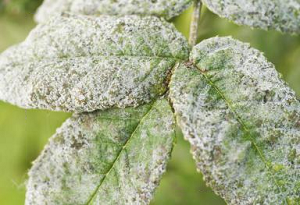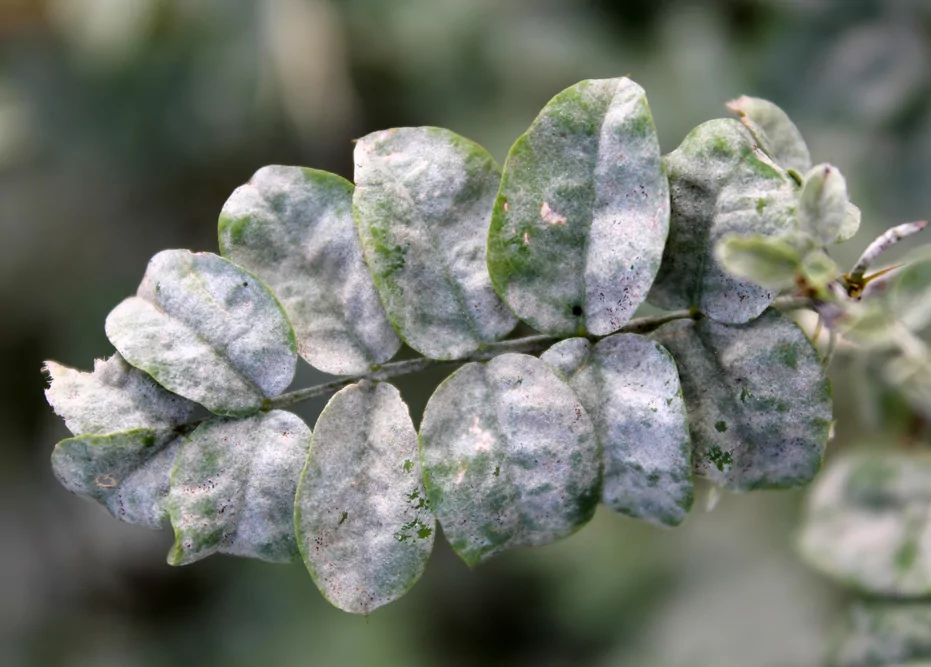Plants in the open ground very often suffer from fungal diseases, namely powdery mildew.
Powdery mildew is a fungal disease caused by various types of superficial fungi. Manifested in the form of white powdery mildew both on the surface of the leaf and under it, the stem or bud of a flower. Powdery mildew is found on many houseplants, as well as on open ground plants. The growth of infected plants slows down, the leaves are deformed and twisted, dry up and fall off prematurely, the plant loses color, the buds do not open, the flower does not bloom. Plants such as roses, gerberas, kalanchoe, begonias, violets and others are most often affected by this disease.
Causes of the disease:
- too much humidity
- a sharp change in temperature
- already bought an infected plant
- a healthy plant is near the sick
- insect transmission of powdery mildew spores

Treatment of powdery mildew:
If you notice a white plaque on the plant in time, the plant can be saved. You need to act immediately.
You can use soda solution: add one tablespoon of soda per liter of water, mix thoroughly and spray, water the plant.
Soap solution: per gram of water dissolve 20 grams of soap, and add 2.5 grams of copper sulfate or one tablespoon of baking soda, wash the plant, use the solution once every 7 days.
If the infection is very strong and parts of the plant are already covered with gray powdery mildew, you need to remove all infected parts and apply fungicides, following the instructions.
The plant should be treated in the fresh air or in non-residential cool rooms. Thoroughly spray the plant, you also need to cultivate the land. Do not forget that chemicals are very harmful and toxic to humans, you need to take all necessary safety measures.
After the procedures, our plant is quarantined (away from other houseplants in a shady place).
When the plant starts to renew itself, in about 3 weeks, we put it in a permanent place.

